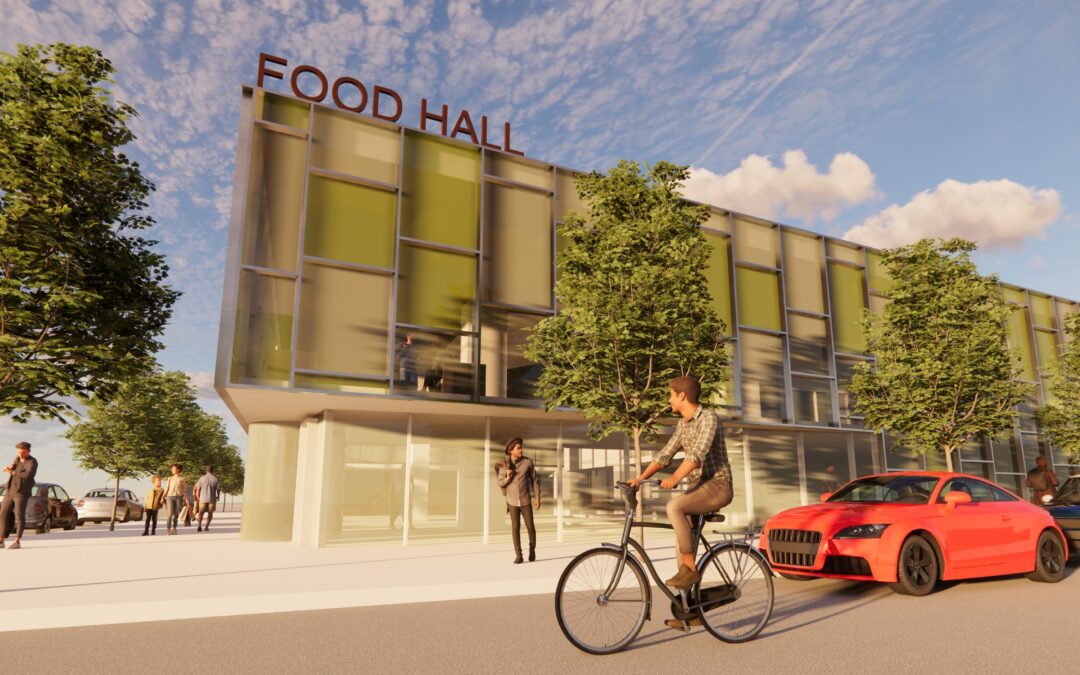Building programs are one of the most dynamic aspects of introducing a new food-focused facility. Building programs are how a community connects to the mission of a facility and experiences the economic impacts. They define a facility’s uses, users, spaces, size, adjacencies, revenue models, costs, and technical aspects to demonstrate how it functions in carrying out its purpose.
However, when and how building programs are designed are crucial to a facility’s long-term sustainability. Often organizations want to design a facility before going through the sometimes slow process of garnering buy-in from potential users and understanding how the space must be programmed to serve them.
After years of doing this work at New Venture Advisors, we have identified a few essential steps to ensure a facility’s viability. More importantly, following these steps can help organizations avoid redos and errors in their facility design, which are much more expensive to undo.
Step One: Community Viability
Decisions about a new food facility must have adequate input from its users and beneficiaries to get a complete understanding of the marketplace. Ideally, stakeholder feedback should drive a project’s direction to avoid costly missteps. It cannot be stressed enough: be thorough and inclusive of all stakeholders. Before moving to step two, be certain you can answer the following:
• Is there community support for the concept as a whole?
• Is there buy-in from the core stakeholder groups (producers, buyers, site/operators)?
• Will this facility deliver on the community or mission goals and objectives?
Step Two: Operational Viability
Well-planned decisions about an operational model for a new food facility will optimize the use of time, funding, labor, and personnel, ultimately increasing the likelihood of success and generating economic impact. Before moving to step three, ensure that the following questions can be answered with support from the project stakeholders:
• Is there an operational model with consensus support? Are there clear functions the building will provide?
• Is there an operator identified? Or, can the project leads realistically fulfill the operating needs identified?
• Is there a site identified? Can the proposed site(s) support facility needs?
—> Step Three: Building Program Viability
This is when New Venture Advisors recommends designing the building program. After the previous steps are answered, and there is clear community support and a working operational model, organizations are equipped to design intentional building programs that meet desired outcomes and voiced needs. Building programs also play hand-in-hand with determining financial viability (step four) and inform the eventual facility design.
• What programs can be offered based on the operational model?
• What capacity (financial, personnel, equipment) is needed for the programs?
• Who will oversee programs (the operator or other community organizations)?
• How will partners collaborate or participate in program design, execution, or engagement?
Step Four: Financial Viability
Primary considerations for financial viability include the substantial investment typical for new structures and their functions. Building programs that best meet the objectives of supporting organizations inform potential revenue streams that can eventually offset operating costs. Answering these final questions about the financial model will determine if the building program is financially sustainable and how it can be modified.
• Is there a time horizon in which the facility model can break even or achieve sustainable operations?
• Are the milestones of that model realistic and achievable?
• Is there adequate tolerance for any loss, debt, or risk associated with the financial picture?
Ultimately, designing a new food-based facility presents many opportunities. At New Venture Advisors, we want to ensure that the vision for the facility translates into a sustainable community asset.
Photo courtesy of New Venture Advisors



